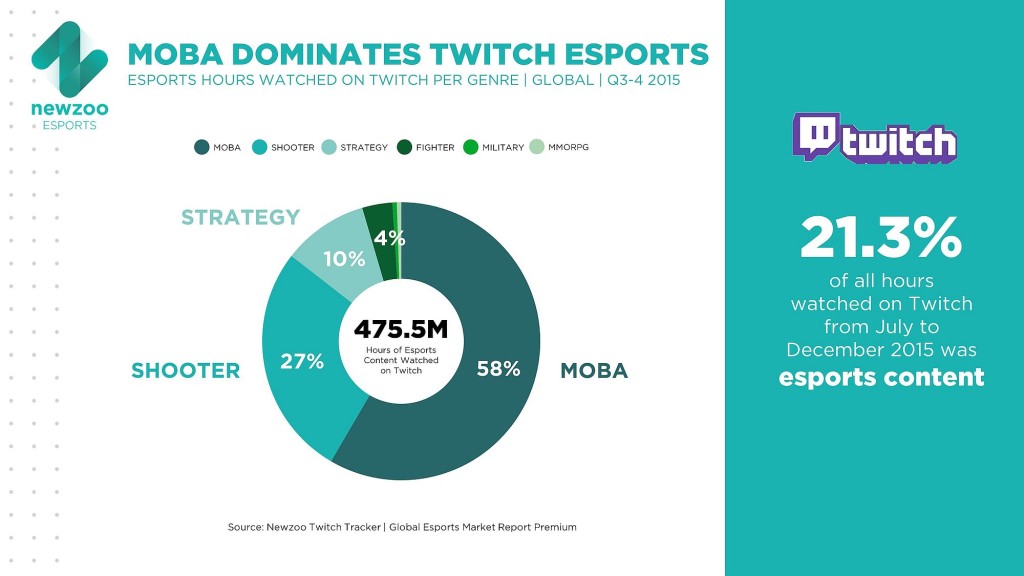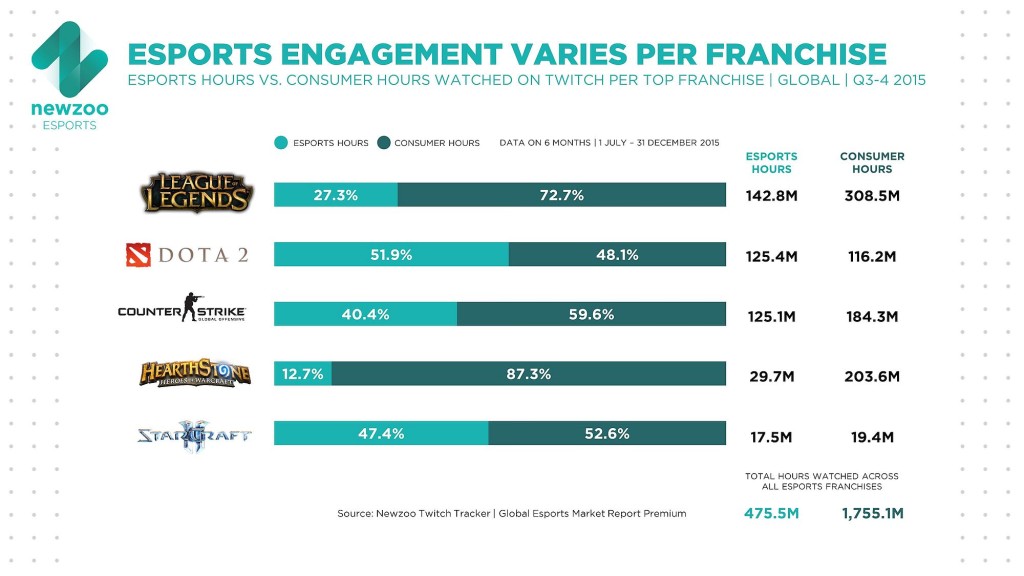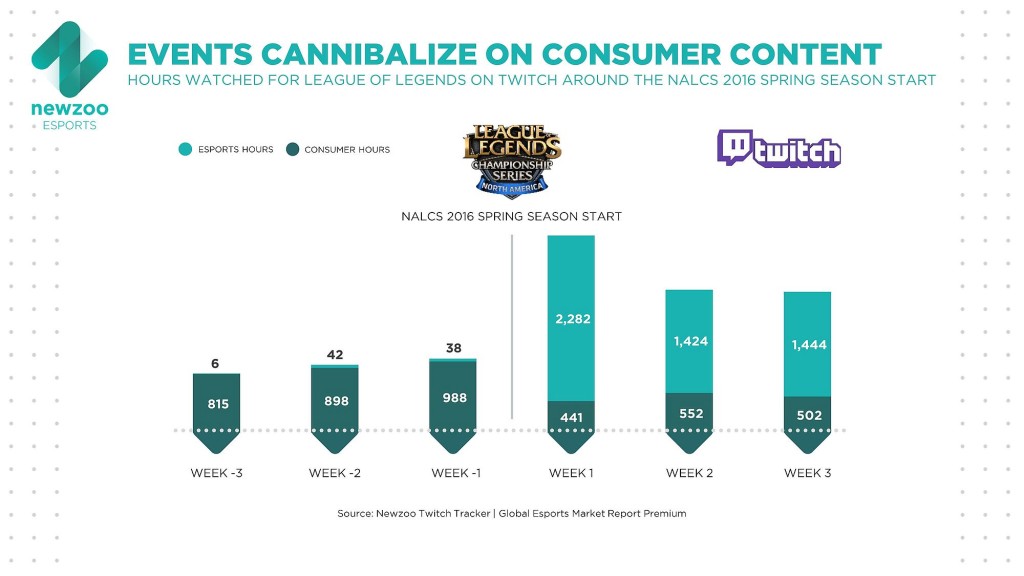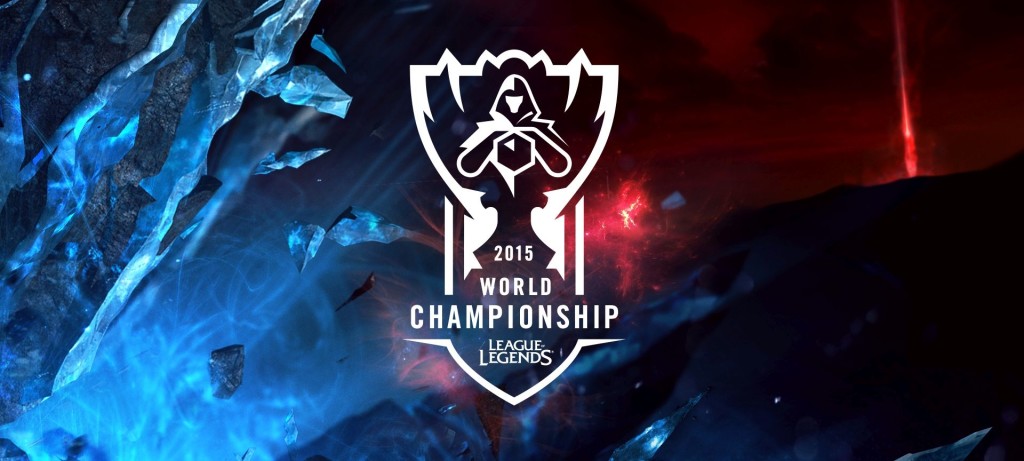Livestreaming games has gone from an odd curiosity to a major driving force in the game industry, propelling eSports and games alike to new heights. The initial driver of this technology was a minor offshoot of Justin.tv called Twitch, created in 2011, which focused on games so that the main Justin.tv site wouldn’t be overwhelmed by them. This proved to be an excellent idea, as livestreaming games exploded in popularity, leading to Twitch.tv being purchased by Amazon for nearly $1 billion in 2014.
It’s not at all a coincidence that the rise in eSports has happened along with the massive growth of livestreaming. The two have had a synergy, where rising interest in eSports propels viewing of livestreaming, and then the growth in livestreaming attracts more viewers to eSports. Market research and eSports analyst firm Newzoo has been following this closely, and new information from Newzoo shows clearly the relationship between Twitch and eSports. Of course, while Twitch is the object of this particular study, other livestreams and videos found on YouTube Gaming, Hitbox, and Azubu are also deeply intertwined with eSports.
Marketers are following this with a keen eye for a couple of reasons. First, the large and fast-growing eSports demographic is a prime one for many brand marketers, which is why you’re seeing national and international brands like Coca-Cola sponsoring eSports events. Second, game streams and videos are an important part of the marketing for all kinds of games, not just those that are eSports. When tens of millions of people regularly tune in to watch one person talk about games, this is something any game marketer needs to follow closely.
“According to the Newzoo Twitch Tracker, 21.3 percent of all hours watched on Twitch from July to December 2015 was eSports content,” noted Newzoo in a blog post. “This sums up to 475.5 million hours of eSports content watched across all eSports franchises, an average of over 79 million hours a month.” That’s a stunning amount of viewership, but it’s important to understand how that breaks down among the various eSports titles. “An analysis of viewing hours per franchise reveals that the share of eSports content compared to game content streamed by consumers varies widely from 12.7 percent for Hearthstone to 51.9 percent for DotA 2,” the post continued.
The game most closely associated with streaming and eSports are the multiplayer online battle arenas (MOBAs) such as League of Legends, DotA 2 and Heroes of the Storm. “MOBA’s account for 58 percent of the total eSports hours watched on Twitch, of which most hours come from Riot’s League of Legends and Valve’s DotA 2,” stated Newzoo. That correlates well with the popularity of those games in terms of revenue, where Riot Games is estimated to have pulled in more than $1.6 billion in 2015 from League of Legends.
While MOBAs have proven to be immensely popular over the last few years, the first-person shooter (FPS) genre of game has been a favorite for decades. The fast action of a typical FPS also proves to be quite popular with streamers. When you add FPS games to the 58 percent of Twitch eSports viewing, the two genres between them account for some 85 percent of the total eSports viewing on Twitch. Combined, the two genres were responsible for 406.7 million hours of eSports viewing in the second half of 2015.

That’s not to say that other genres were unpopular. “10 percent of hours watched went to streams in the strategy genre,” Newzoo pointed out. “These streams include Age of Empire II: The Conquerors, and the big players, StarCraft II and Hearthstone. Consumers watched a combined 47.3 million hours of Strategy eSports content in the last six months of 2015.” As publishers look to make more games into eSports in a variety of genres, the viewing time should begin to even out between game genres.
The balance between consumer and eSports content is revelatory. “Compared to the consumer content, DotA 2, Counter-Strike: Global Offensive, and StarCraft II generate a lot of eSports hours,” noted Newzoo. “More than half of the total DotA 2 hours watched is eSports content. These three games have a dedicated eSports community, whereas the League of Legends and Hearthstone communities have a relatively larger group of non-eSports viewers. This is reflected in the contrast between Hearthstone and StarCraft II. Just 13 percent of the total hours of Hearthstone is eSport centered, compared to the 47 percent of the total StarCraft II hours. In absolute terms, with 29.7 million hours watched, Hearthstone still triumphs the 17.5 million hours of StarCraft II because of the larger consumer inflow.”
The message for marketers is that not only does the eSports potential vary for different games, but so does the eSports appeal. Some games are just naturally suited to competitive play at a high level, while some are enjoyed by a broad audience with less regard for the high-level competitive play. It’s important to realize, that key competitive events can pull people away from watching consumer-level play—or even from playing the game themselves.

“While large eSports events drive high traffic on Twitch, they also take eyeballs away from the regular consumer generated content,” Newzoo pointed out. “The graph below shows the hours watched for League of Legends on the three Saturdays preceding the NALCS 2016 Spring Split and the first three Saturdays of the new season. During the first three days of the season, consumer generated content viewership hours of League of Legends were down 44 percent compared to the three weeks before the season started.”
Fans want to watch the game played at the highest level in preference to less skilled play. That’s true of eSports fans, but also for players who don’t care much about eSports. Watching highly-skilled players in action provides a valuable tutorial on what you can do to improve your own play. This is true both on the strategic level of figuring out the best champions to play, as well as on the tactical level of movement and positioning choices during the game. This provides an extra dimension to eSports viewing that’s not usually found in regular professional sports viewing. While a few amateur players can get useful info from watching professional play, games are mostly watched for the sheer fun of it.

These observations about Twitch, eSports and game streams lead to some important ideas for marketers. For one thing, if you’re looking to eSports for brand marketing, don’t neglect the role of the casual player who is not an eSports fan. You’ll manage to pull in a lot of views from the broader audience, not just the eSports enthusiasts. That makes a difference when you’re crafting your marketing message. Also, for games marketers, you can see the beneficial effect a successful eSport has on driving engagement with your game. It’s a continuum of interest, and marketing efforts should be taking place all along the spectrum.

